

Esports marketing 101: How to grow your reach and engage the gaming community
Esports marketing 101: How to grow your reach and engage the gaming community
By 2025 the esports & gaming audience is expected to reach over 1.8 billion people! From avid esports viewers to live-event goers and mobile gamers, the esports audience is diverse, fast-growing, and therefore valuable for brands. So how can you leverage esports marketing to grow your reach?
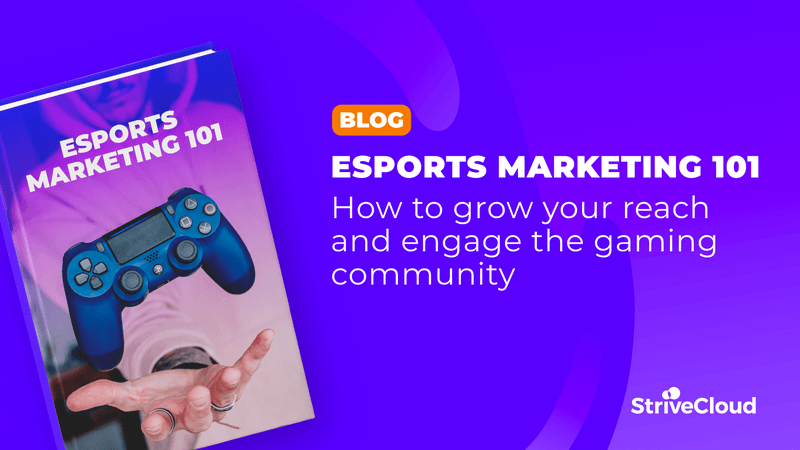
This visual sets the stage for our deep dive into esports marketing, highlighting the dynamic and engaging world that brands can tap into.
In this guide, you’ll learn how to enter the esports world and discover 17 powerful B2C esports marketing to get started.
- Where we are: esports in 2022
- What is esports marketing?
- Why esports marketing?
- How esports marketing differs from traditional digital marketing strategies
- What you need to get started (+ a free checklist!)
- 17 B2C esports marketing strategies (with examples)
- Picking the right platforms for your esports business
- Frequently Asked Questions
Where we are: esports in 2022
Between 2020 and 2025, global esports market revenue is set to double from around $900 million to $1.8 billion! And according to esports intelligence agency Newzoo, 2022 will be another great year:
- The global esports audience will grow +8.7% year on year to reach a total of 532 million people.
- 261 million people will watch esports content more than once a month.
- 271 million people will watch esports content occasionally.
Where is all this growth coming from, though? In essence, market research names three core elements that explain the rise:
- Popular esports franchises like Valorant, Fortnite, and others contribute to a growing fanbase of both players and viewers.
- Mobile esports is maturing with professional leagues like Mobile Legends ‘Bang Bang’ and League of Legends ‘Wild Rift’.
- The rising popularity of esports in growth markets such as Southeast Asia, Latin America, the Middle East, and Africa.
The latter also allows brands to create localized content, one of the fastest-growing revenue drivers in esports marketing right now. Some of the opportunities here include:
- Hosting local gaming tournaments & esports competitions.
- Working with local influencers like streamers or professional esports players.
- Hosting live events in local venues or esports bars.
What is esports marketing?
Simply put, esports marketing is when brands engage with the esports community to drive awareness and revenue. This can take many forms, from product placement in games to sponsoring esports streamers, teams, and competitions. Similar to traditional sports marketing both endemic and non-endemic brands can benefit from building a relationship with the audience.
Why esports marketing?
Across the world, 1 billion people are already engaging with esports in one way or another. Whether they enjoy watching gaming tournaments or participating in live events, esports is no longer just a niche. Owing to the sheer scale of esports’ popularity, brands are taking notice. In fact, in 2020 consultancy firm McKinsey noted that 60% of esports partnerships feature non-endemic brands (those not from gaming).
But why should brands target esports? The answer is access to a valuable audience.
The esports audience is growing fast globally. They consist out of a younger, digital native audience which is mostly male, but female gamers are growing too. Lastly, they’re highly engaged and accessible.
It’s easier to build loyalty, collect first-party data and build powerful relationships with younger audiences. About six out of 10 internet users watching esports are between ages 16 and 35.
How esports marketing differs from traditional digital marketing strategies
Esports marketing requires a different mindset. The most successful campaigns take a dedicated approach that adds value to the community. In other words, just slapping your logo on a stream won’t do the trick. But why is esports so unique?
The esports audience is full of early adopters
Agoria, a Belgian tech federation, noted that fans of esports are “often early adopters” when it comes to new technology. Besides that, they’re generally open-minded enough to try new things. They’re usually open to trying new products, hopping on the latest trends, and telling their friends about them!

The product adoption curve illustrates how gamers are often early adopters, making them a key audience for innovative products and brands.
Communication must be engaging and authentic
Of course, authenticity should always be your motto. But it matters that much more in esports. Research from influencer marketing agency Adshot indicates that around 75% of digital natives use Ad Blockers. In short, for your communication to be noticed, it must be personalized, genuine, and dialogue-based. Esports fans want to be more than just consumers - they also want to contribute and have a say in how things are done.
Top Tip: When sponsoring a game, make sure that not only does it fit your brand, but that you have a real affinity for that game and its community!
What you need to get started (+ a free checklist!)
So you need an esports marketing plan. You’re in luck! We devised an easy four-step checklist to get you started on your route to success!
1) Find the right esports audience for you
McKinsey, 2019 - "Brands tend to underestimate the fragmentation of esports fans. As a result, they risk spending their money unwisely".
Not every game commands the same audience. Audiences generally differ based on devices, game types, and more. To overcome (and take advantage of) the fragmented esports market, you must find titles that complement your brand identity.
For example, if your target audience leans female, consider focusing on mobile gaming marketing. In general women’s top 3 game types are puzzle games, adventure & strategy. Compared to men, of which the majority play on PC. Their top 3 games are shooter-based, strategy, and sports.
2) Identify the right channels
Where does your target audience hang out? With dozens of different platforms available to the gaming community, identifying the right channel is crucial for effective targeting.
For instance, take the battle royale game PUBG. The game’s subreddit hosts 2 million visitors, whereas Discord hosts a tenth of that at 260,000. But while Reddit offers a wider reach (and is therefore prone to be overwhelmed with content), Discord is a tighter community that attracts higher levels of engagement.
3) Partner with powerful esports influencers
Only 11% of esports viewing time actually comes from professional competitions. Instead, independent streamers dominate the market - and this represents a great opportunity for brand partnerships. Esports influencers command large audiences and, as independents, rely on established brands for sponsorships.
4) Launch/sponsor an esports team
Sponsorships are where the money is in esports. In fact, sponsorships bring in twice as much as media rights, tickets, merch, and streaming sales combined. So how do you get involved? Well, you could launch your own esports team and watch them rise in the rankings. Or alternatively, you can also sponsor existing teams which companies ranging from Coca-Cola to Mercedes-Benz have taken a huge interest in.
What’s great about sponsorship in esports marketing is the broad opportunities that come with it. Besides live events, esports is mostly a digital-first medium. Therefore, engaging fans online and collecting first-party data is easier than traditional sports marketing.
Connect, engage & monetize a gaming community in just 2 weeks. Take a peek inside our 360° tournament platform!
17 top B2C esports marketing strategies (with examples)
#1 Be aware of “update season” - and align your schedule
In esports, a game update is a highly anticipated event. Usually, updates come with balance changes and new in-game items. For example, the makers of Fortnite even organize their updates as a “season of virtual events”. To cash in on the hype, you could run tie-ins and promotions during this period.
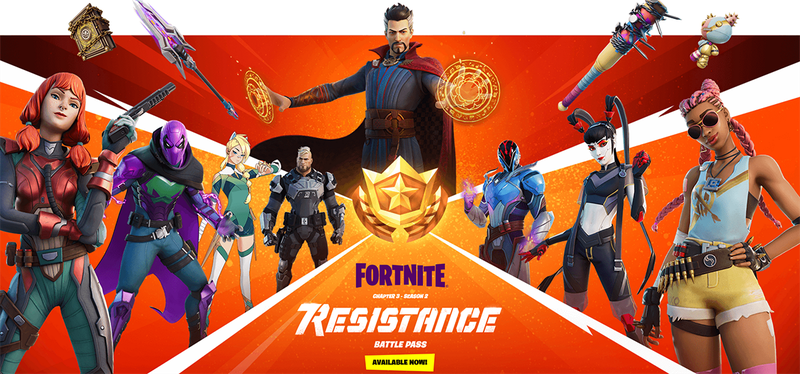
Fortnite's seasonal updates show how game developers create highly anticipated events that marketers can leverage for timely campaigns.
#2 Credibility comes before the prominence
Esports marketing is more than plastering your logo everywhere. While research shows that prominent sponsors of gaming tournaments are 4x more memorable than those without prominent placement, that prominence will backfire if the sponsorship feels fake, or like a cynical cash grab.
Aldi for instance tried to enter the esports market with a campaign aimed to stop kids from playing games, so they’re ready when dinner is. Needless to say, the campaign was not a great success, with many gamers scolding Aldi for being out of touch.
#3 Community building and socialization are crucial
Socialization is one of the biggest reasons why gamers return to their communities. To make the most of a gaming community, encourage gamers to discuss and share their own stories or content.
For instance, Nike partnered with Korean streamer JisooGirl to create a powerful video about gender bias in gaming. To be sure, this was a genuine and positive way to contribute to the group discussion, while also showing off Nike’s brand values.
#4 Deepen your connection with your audience
Esports fans are passionate about their niche. As a result, communities tend to develop their own unique culture. To successfully connect with a market of gamers, you need in-depth knowledge of what the audience likes, and dislikes, and who its brand champions are.
Many tech companies for instance understand that lots of developers spend their free time gaming. After 1 week of targeted sponsorship deals, they got over 50 applications!
#5 Esports crosses boundaries (both cultural and geographical)
Pop culture has gone multipolar - and esports is no different. European sponsors are often surprised to find that around 1/3 of esports viewers are from outside the team’s home country. Essentially, companies expecting to hone in a local market may be disappointed. But if your company has a wide digital reach, you will find greater success.
For an example of how to capitalize on this multipolar media environment, League of Legends publisher Riot Games launched K/DA, a multilingual virtual girl group. Their first track, released in Korean and English, achieved over 56 million views!
#6 Encourage gamer interaction with influencers
By far, one of the best ways to motivate gamers is to involve them. Namely, with their favorite influencers! US chocolate giant Hershey is especially clever at this esports marketing technique. In 2019, Hershey sponsored Twitch megastars TimTheTatman and DrLupo and organized meet-and-greets with fans.
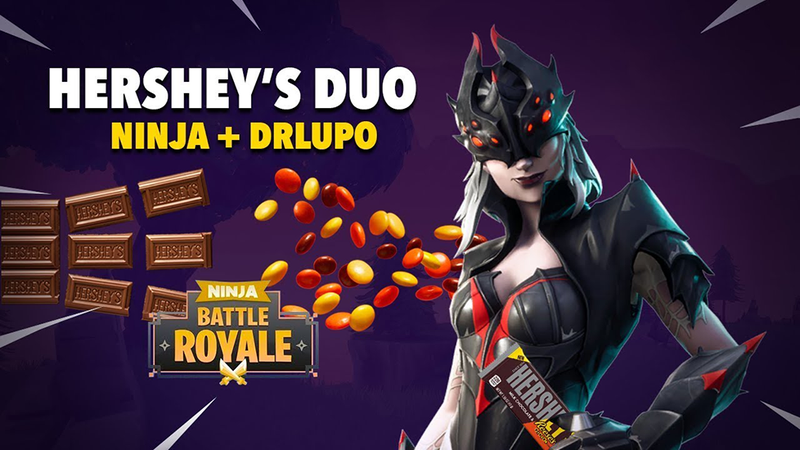
Hershey's collaboration with Twitch streamers demonstrates a powerful strategy for connecting with fans through influencer engagement and real-world events.
#7 Give users opportunities to learn from each other (and the pros)
It is a fact that gamers trust user-generated content more than traditional ads. But to go even further, research shows that when amateur players learn from other players, their team loyalty increases! In short, boost opportunities for socialization, including across players with different levels of experience.
The luxury brand Gucci for instance launched its own gaming academy with professional players, commentators and trainers. With it, they want to give people the opportunity to go pro.
#8 Improve your audience measurement
It’s easy to see the big numbers attached to esports events and walk away impressed. But many figures, like virtual attendance and hours of streaming watched, can be misleading at a first glance. Brands, marketing agencies, and esports organizations need to look behind those numbers. Ask yourself, where does my audience really fit in? And is the return on investment worth it?
#9 In-game gifting is a strong incentive to purchase
How else can you incentivize purchases? Research shows the answer is in-game gifting! In essence, gifting can strengthen the social ties between players, and that represents a strong incentive to spend money in-game. To name a few good gift ideas, custom skins or in-game usable objects like cars can entice users.
League of Legends for instance does this with ‘loot drops’. In 2022 they partnered with Tiffany & Co to offer exclusive in-game skins!
#10 Keep a close eye on the trends (things move fast in esports!)
Put simply, the lifespan of a a game, team, or streamer can be cut short very quickly. Gamers tend to be loyal, but they are also enthusiastic about new and exciting trends. Whether it's the latest trending meme or handling COVID-19 restrictions, being on top of trends can literally induce overnight success. The game Detroit: Become Human for instance got rapidly picked up after its graphics were turned into memes.
#11 Let gamers celebrate the achievements of their favorite streamers
Fans love it when the player or team they support wins. As a matter of fact, research shows that “vicarious achievement”, the feeling of winning through others, is a major motivational factor behind gamer engagement. To capture that excitement, encourage gamers to celebrate in Discord communities or offer celebratory giveaways.
After qualifying for the PUBG invitational series, the 7Sea esports team got lots of praise for their performance on social media during the afterparty.
#12 Maximize community engagement through social media
Esports marketing is all about community engagement. To build on the success of live events, for example, post polls on Twitter that ask gamers things like “what was your favorite moment?” This sparks discussion and helps link your brand to the event.
#13 Offer exclusive content to streamers & gamers
Exclusive content makes users feel special - and can reinforce that community feeling. Valorant, a popular esports title, employed this marketing strategy for its 2020 launch. Essentially, instead of paying streamers like Pengu to just talk about the game, they let him offer exclusive beta access to a select few of his followers. With this strategy, Valorant earned a whopping 470 million viewing hours on Twitch before the game even launched!
#14 Organize your own live tournaments and events
While esports is seen as a mostly digital industry (the clue being in the name), live experiences actually form a huge part of the esports world. To be sure, gamers are not shy about attending local tournaments and events:
- 81% say live events make them feel a part of the gaming community;
- 80% attend to watch their favorite players & teams;
- 61% go to events to connect with their online friends.
What’s more, gamers that attend live events spend more and play more! The League of Legends championship for instance garnered over 15,000 live spectators in 2019.
#15 Provide gamers with real value (or face being ignored)
It may sound obvious, but you have to make your offer valuable to gamers. Remember, most gamers are a part of the digital native generation and are accustomed to ignoring clutter. But you can avoid this like Louis Vuitton by actually giving them something of value.
Whilst the luxury fashion brand sounds like an unlikely partner for League of Legends, their offer of exclusive and fashionable character skins garnered 100 million impressions!

This partnership between Louis Vuitton and League of Legends exemplifies how non-endemic luxury brands can successfully enter the esports market by offering genuine value through exclusive content.
#16 Social values matter greatly to gamers
Social responsibility is an important aspect of esports marketing. Why? In brief, it matters to those consumers aged 18-35 (in other words, a plurality of gamers). Studies show that the digital native generation is more passionate about social issues than any other age group, and esports helps lead the way.
For example, America’s top esports team, the ‘Evil Geniuses’ - worth an incredible $255 million by the way - support the LGBTQ+ gaming community with a themed podcast. They run programs to help women get into gaming, and partner with Cxmmunity, an organization focused on improving minority representation in the gaming industry.
#17 Video advertisements offer a broad reach to build awareness
Clearly, the millions of streaming hours on Twitch and YouTube provide a great platform for video advertisements. They also allow marketers to target an audience with precision. Epic Games for instance created an interactive ad experience for Fortnite with Travis Scott where they released his latest song in a virtual concert. Over 12,3 million gamers participated.
Picking the right platforms for your esports business
Simplify your strategy with the all-in-one tournament & community platform from StriveCloud
Our tournament platform combines the power of competition, content & community all in 1 platform. Simply set up (automated) tournaments, share & distribute content, and fuel loyalty with our gamification features.
Besides, our platform is easy to monetize. That’s because it is built specifically to empower you: the community owner. It’s a perfect solution to build a highly engaged community of gamers and esports fans, and connect them with relevant brands. Unlike social platforms like Discord, everything is white-labeled so you can add your own branding and instantly boost your credibility. What’s more, you own and keep all the user data, enabling you to set up powerful targeted campaigns and tournaments.
When the Swiss gaming community GameTurnier came to us to create a digital space for them, their goal was to grow their platform. And together we achieved success! Since our partnership, they now host 600 competitions weekly!
Find out why leading sports brands & esports agencies love us! Book a demo with our experts & discover the benefits of having your own tournament platform!
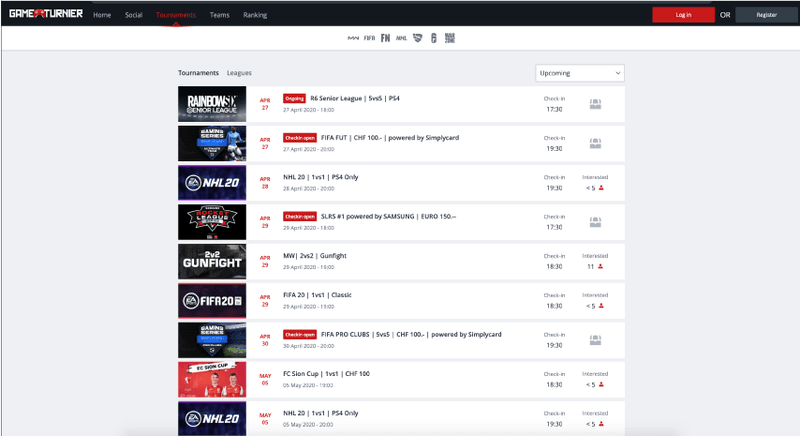
The GameTurnier platform is an excellent example of how a dedicated digital space can foster community growth and host hundreds of weekly competitions.
Discord is the heart of the gaming community
On Discord, gamers can live in the moment. The platform enables live chat and audio calls between gamers and allows moderators to organize users into separate channels according to rank or specialty. In short, the platform creates a secure place for users to connect and build their gaming community. In 2021, Discord hosted 140 million MAUs!
Livestreaming with Twitch or YouTube will boost your reach
By 2024, the global gaming live-streaming audience is predicted to hit a staggering 830 million people. Without a doubt, what attracts gamers to live streams is their authentic and interactive nature. And your esports marketing strategy can take advantage of this through partnerships with streamers or video advertisements on the platform.
Drive your esports marketing strategy with a complete solution! Walk through the opportunities of our tournament & community platform!
Frequently Asked Questions
What is the state of esports in 2022?
In 2022 the global esports audience will grow by +8.7% year on year to reach a total of 532 million people. This growth is driven by the increase of popular esports franchises, mobile esports, and global market expansion. These trends also allow brands to localize their esports marketing efforts and break through to a global audience.
What is esports marketing?
Simply put, esports marketing is when brands engage with the esports community to drive awareness and revenue. This can take many forms, from product placement in games to sponsoring esports streamers, teams, and competitions. Similar to traditional sports marketing both endemic and non-endemic brands can benefit from building a relationship with the audience.
Why esports marketing?
Across the world, 1 billion people are already engaging with esports in one way or another. Whether they enjoy watching gaming tournaments or participating in live events, esports is no longer just a niche. Besides the sheer scale, the esports audience also offers an interesting and diverse target audience.
How does esports marketing differ from traditional digital marketing?
Unlike other markets, esports fans are primarily an enthusiastic, tech-savvy group willing to take risks on new products. Similar to traditional sports, audiences differ tremendously from game types to gaming devices. In other words, your targeting and messaging need to be on point.
Related Posts
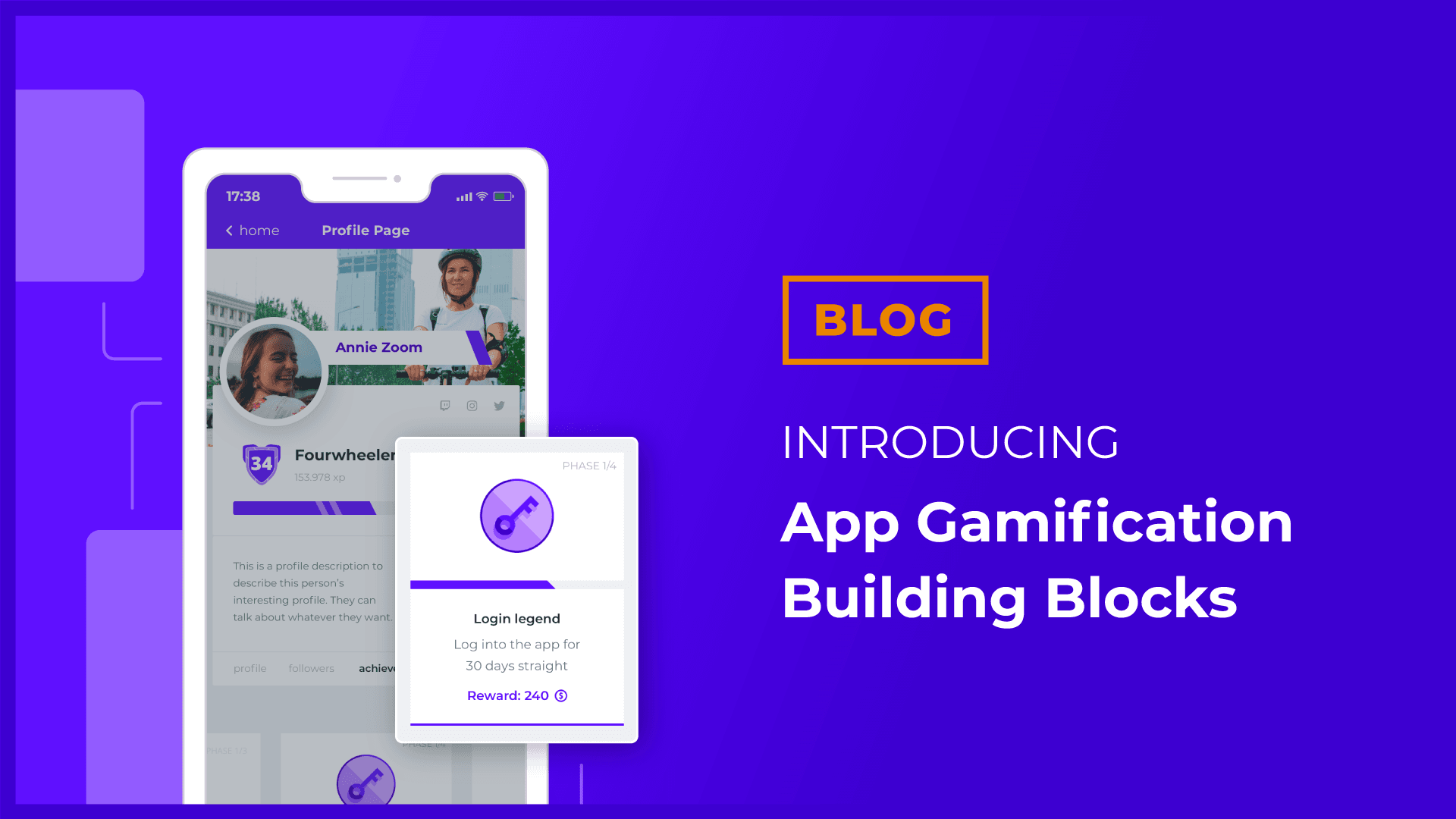
How using building blocks makes your app stronger and more resilient than ever
To thrive in today's fast-changing digital world, apps need to be flexible and customer-centric. That's why building blocks allow apps to move faster & more agile. Nimble, responsive - and above all - based on consumer feedback, building blocks like the ones StriveCloud offers are making apps stronger and more resilient than ever.
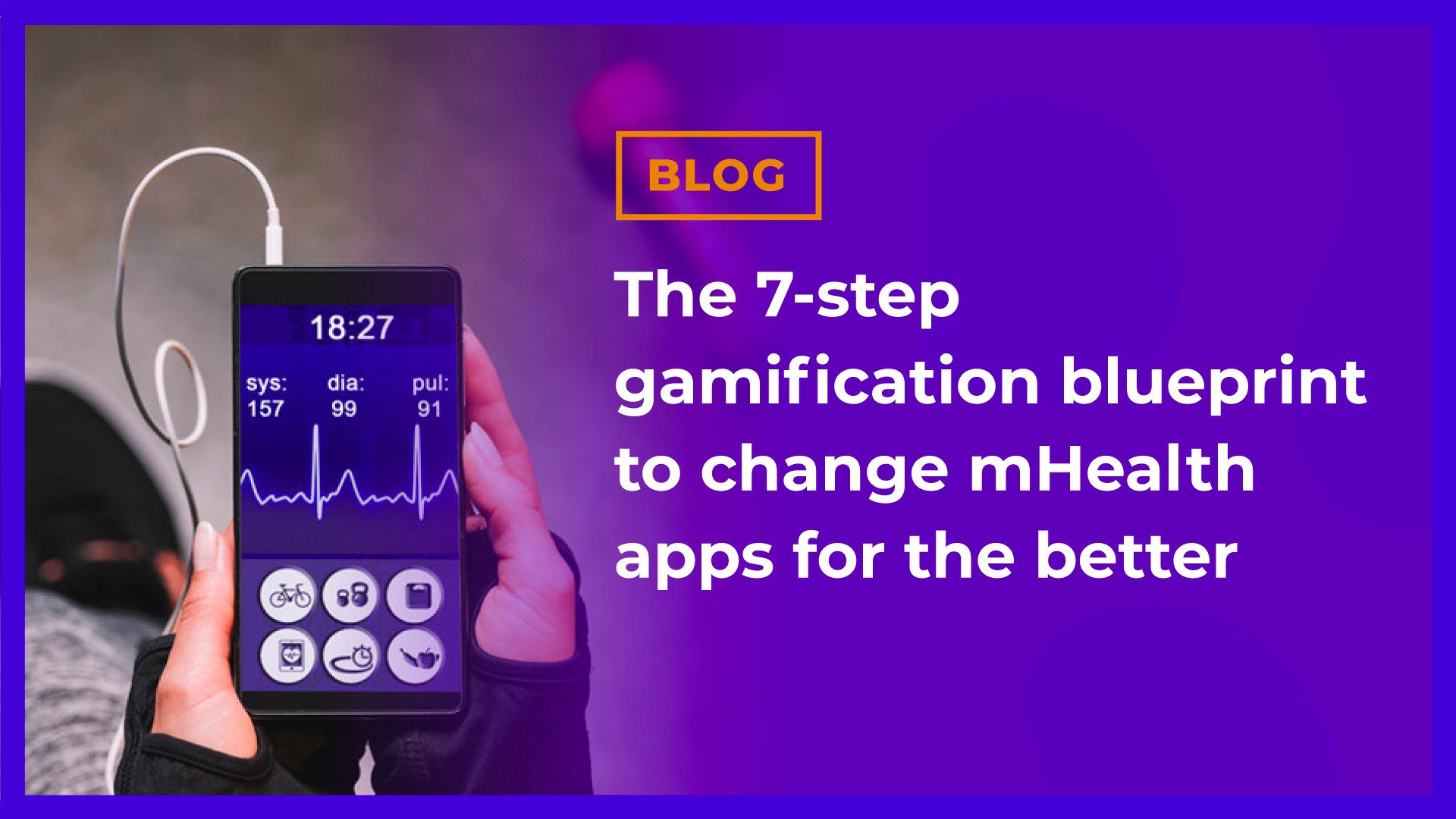
The 7-step gamification blueprint to change mHealth apps for the better
In 2020, European spending on mobile health apps jumped 70%. But how can mHealth apps succeed in retaining users, improving their health, and drive app engagement, all the while competing in a market of over 100,000 apps? Gamification for mHealth gets your users moving! Want to find out how it can help you? Read the full post!

